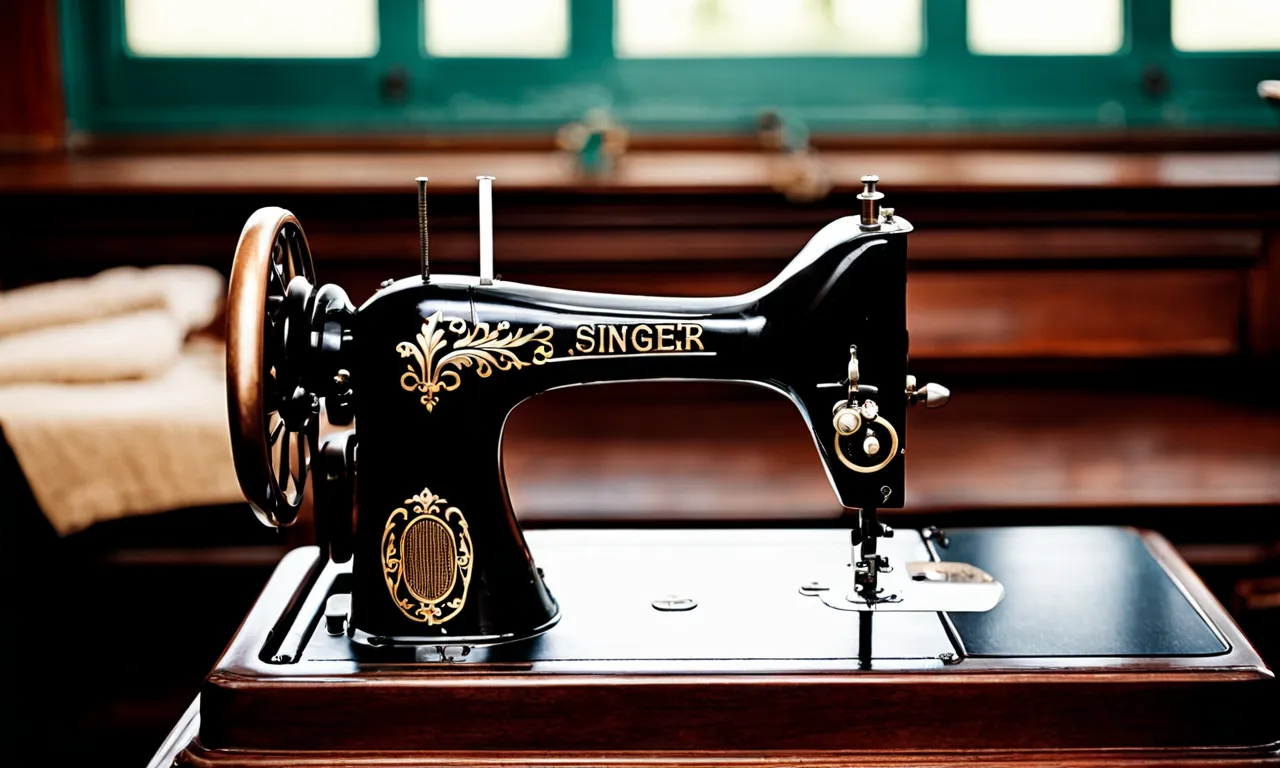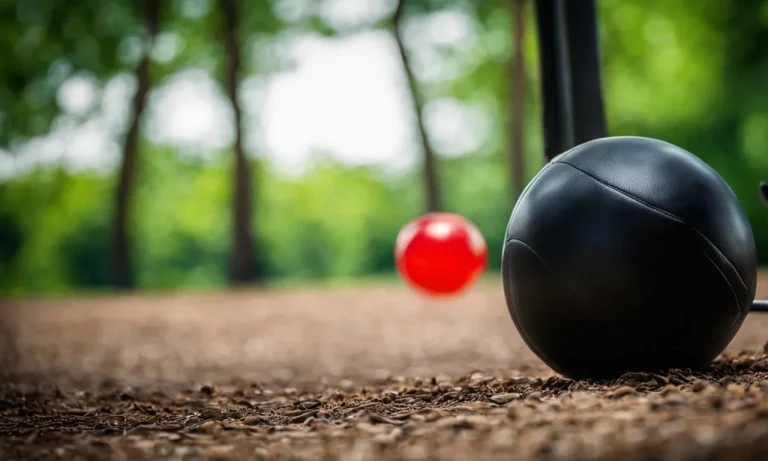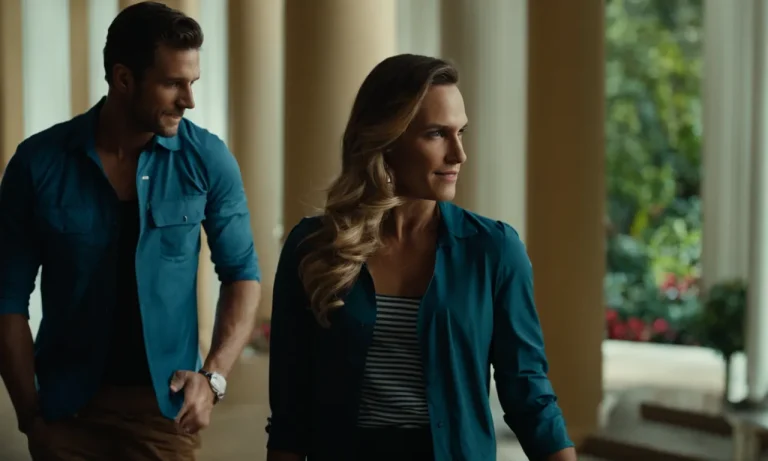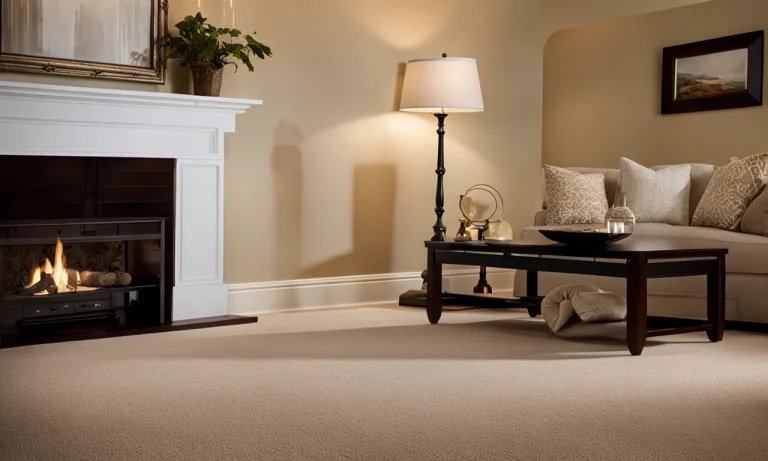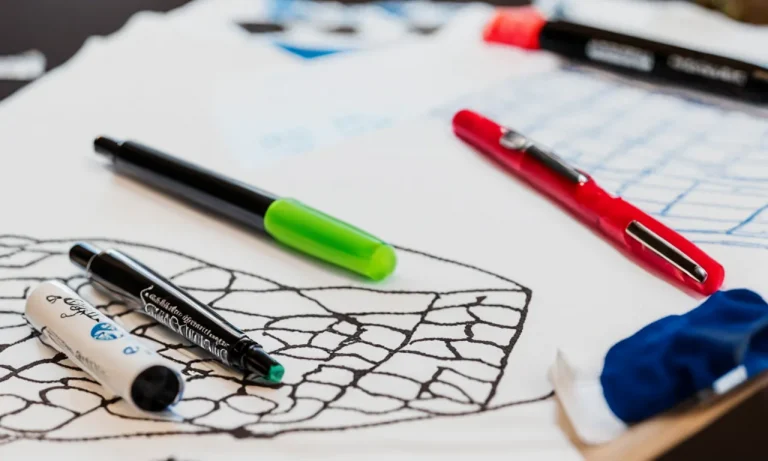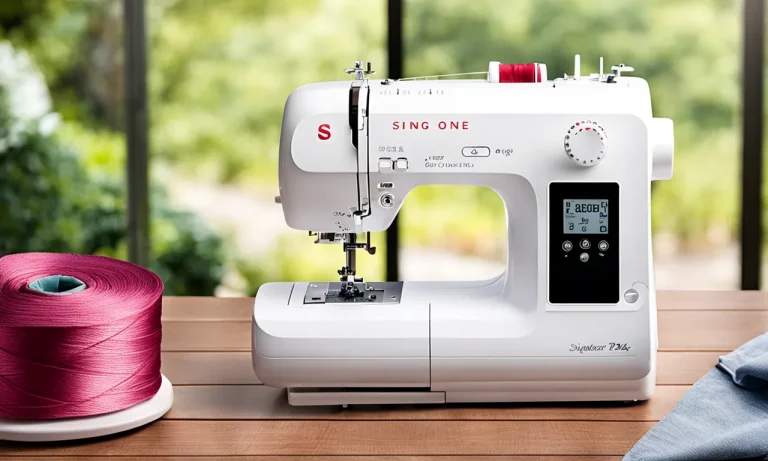How Much Is A Singer Sewing Machine Worth? A Detailed Guide
Sewing machines have been around for over 160 years, with Singer being one of the first and most iconic brands. If you’ve inherited a vintage Singer or are looking to buy one second-hand, you may be wondering: how much is a Singer sewing machine worth?
If you don’t have time to read this full guide, here’s a quick answer: The worth of a Singer sewing machine depends on its age, model, condition and rarity. On average, common vintage models sell for $50 to $200. Rare antique Singers can fetch over $1,000.
Factors That Determine a Singer Sewing Machine’s Value
Age and Manufacturing Date
The age and manufacturing date of a Singer sewing machine play a significant role in determining its value. Generally, older machines tend to have higher value, especially if they are considered vintage or antique.
Singer sewing machines manufactured in the late 19th and early 20th centuries are highly sought after by collectors and sewing enthusiasts. The manufacturing date can often be found on the machine itself or through the machine’s serial number.
Websites like singer.com can help you determine the age of your Singer sewing machine based on its serial number.
Model Type and Features
The model type and features of a Singer sewing machine also contribute to its value. Certain models, such as the Singer Featherweight, are considered iconic and highly desirable. Machines with unique features, such as built-in embroidery patterns or specialized stitches, may also fetch a higher price.
The rarity of these models and features can greatly impact their value in the market. Collectors and sewing enthusiasts are often willing to pay a premium for machines with exceptional model types and features.
Condition and Working Status
The condition and working status of a Singer sewing machine are crucial factors in determining its value. Machines in excellent condition, with minimal wear and tear and fully functional mechanisms, are generally more valuable.
On the other hand, machines in poor condition or non-working status may have significantly lower value. It’s important to note that the condition of the machine’s motor, belts, and other mechanical components can affect its overall value.
Regular maintenance and proper care can help preserve a sewing machine’s condition and increase its worth.
Rarity and Collectibility
The rarity and collectibility of a Singer sewing machine can greatly influence its value. Certain models or editions that were produced in limited quantities or had unique design variations are considered rare and highly collectible.
These machines often command higher prices in the market, especially among avid collectors. Keep an eye out for limited editions or special releases of Singer sewing machines, as they may hold significant value for collectors.
Aesthetic Details and Decoration
The aesthetic details and decoration of a Singer sewing machine can also impact its value. Machines with ornate designs, intricate decals, or gold leaf detailing are often highly sought after by collectors and enthusiasts.
These decorative elements add a touch of elegance and beauty to the machine, making it more desirable. The overall visual appeal of a sewing machine can contribute to its value, as collectors appreciate the craftsmanship and artistry of these vintage pieces.
Most Valuable Antique Singer Models
Singer Model 1
The Singer Model 1 is one of the most sought-after antique Singer sewing machines among collectors. This model, also known as the “Turtleback,” was produced in the 1850s and is highly valued for its historical significance.
It was the first sewing machine manufactured by the Singer Company, marking the beginning of a revolution in the textile industry. Due to its rarity and importance, the Singer Model 1 can fetch a high price in the market, especially if it is in good working condition and accompanied by its original accessories.
Singer Model 12
The Singer Model 12 is another antique Singer sewing machine that holds considerable value in the market. Introduced in the late 19th century, this model was designed for domestic use and became popular among households.
It featured a beautiful, ornate design and was known for its smooth and reliable stitching. The Singer Model 12 is highly sought after by collectors due to its aesthetic appeal and functionality. Depending on its condition and rarity, this model can be worth a significant amount to enthusiasts and collectors alike.
Singer Model 27 and 127
The Singer Model 27 and its electric counterpart, the Singer Model 127, are iconic antique sewing machines that are highly valued in the market. These models were produced in the early 20th century and were known for their durability and versatility.
The Singer Model 27 and 127 were the first sewing machines to feature a rotary hook mechanism, which improved stitching quality and speed. These machines were widely used in homes, factories, and even on battlefields during World War I.
Today, collectors appreciate their historical significance and intricate design, making them valuable additions to any antique sewing machine collection.
Singer Model 66
The Singer Model 66 is a popular antique sewing machine that holds both sentimental and monetary value. Produced from the late 19th century to the mid-20th century, this model was known for its reliability and versatility.
It featured a sturdy construction and a powerful motor, making it suitable for heavy-duty sewing tasks. The Singer Model 66 is often praised for its smooth operation and ability to handle different types of fabric.
With its timeless design and functionality, this model continues to be highly sought after by collectors and sewing enthusiasts.
Singer Featherweight 221 and 222
The Singer Featherweight 221 and 222 are highly coveted antique sewing machines that are known for their compact size and portability. Introduced in the 1930s, these models were designed to be lightweight and easy to transport, making them popular among traveling sewists.
The Singer Featherweight machines were also praised for their exceptional stitch quality and reliability. Today, these models are highly sought after by collectors due to their historical significance and practicality.
A well-preserved Singer Featherweight 221 or 222 can command a significant price in the market, especially if it comes with its original case and accessories.
When determining the value of an antique Singer sewing machine, factors such as its age, rarity, condition, and model play a crucial role. It is also essential to consider the demand and current market trends.
To get a more accurate estimate of a specific Singer sewing machine’s worth, it is advisable to consult reputable antique dealers, collectors’ forums, or online marketplaces dedicated to antique sewing machines.
These resources can provide valuable insights into the current market value and help you make an informed decision.
Common Vintage Singer Models and Worth
1920s-1950s Models (15, 66, 99, 128 etc.)
If you own a vintage Singer sewing machine from the 1920s to 1950s era, you may be curious about its worth. Some of the common models from this period include the Singer 15, Singer 66, Singer 99, Singer 128, and many more.
These machines were known for their durability and reliability, and they are highly sought after by collectors and sewing enthusiasts.
When it comes to determining the worth of these vintage models, several factors come into play. The condition of the machine, its functionality, any additional accessories or attachments, and its rarity all contribute to its value.
Additionally, the demand for a particular model can also influence its worth.
While it is challenging to provide an exact value for each model, on average, a well-maintained vintage Singer sewing machine from this era can be worth anywhere from $100 to $500 or more, depending on its specific features and condition.
However, it is worth noting that some rare models or machines with unique features can fetch even higher prices in the collector’s market.
1960s-1970s Models (Stylists, Touch & Sew etc.)
In the 1960s and 1970s, Singer introduced models like the Singer Stylist and Touch & Sew, which became popular among sewing enthusiasts. These machines were known for their advanced features, including zigzag stitching, built-in buttonholers, and automatic tension control.
The value of these vintage Singer models from the 1960s-1970s era can vary depending on their condition, functionality, and the demand for them. On average, a well-preserved and fully functional model can be worth anywhere from $200 to $800 or more.
However, rare limited edition models or machines with unique features may command higher prices in the market.
1980s-2000s Models (Simple, Talent etc.)
In the 1980s to 2000s, Singer introduced models like the Singer Simple and Singer Talent, which were designed to be user-friendly and affordable for beginners and home sewists. These machines offered a range of basic stitches and features, making them popular choices for casual sewing projects.
The worth of these vintage Singer models from the 1980s-2000s era can vary depending on their condition, functionality, and the demand for them. On average, a well-maintained and fully functional model can be worth anywhere from $100 to $300 or more.
However, limited edition models or machines with additional features may have a higher value.
It is important to note that the worth of a vintage Singer sewing machine can also be influenced by market trends and the preferences of collectors. To get a more accurate estimate of a specific model’s worth, it is recommended to consult experts, check online marketplaces, or refer to reputable antique sewing machine websites like ismacs.net.
Where to Buy and Sell Vintage Singer Machines
Online Auction Sites
One of the most popular options for buying and selling vintage Singer sewing machines is through online auction sites. Websites such as eBay and Etsy have a wide range of listings for vintage sewing machines, including Singer models.
These sites provide a platform for sellers to list their machines and for buyers to place bids or make purchases. It’s important to carefully review the seller’s description and photos, as well as their feedback ratings, to ensure you are getting an authentic Singer machine in good condition.
Additionally, keep in mind that the final price of the machine can vary depending on the demand and condition.
Classifieds and Marketplaces
Classifieds and marketplaces, both online and offline, are another option for finding vintage Singer sewing machines. Websites such as Craigslist and Facebook Marketplace allow individuals to list items for sale, including sewing machines.
Local newspapers and community bulletin boards may also have classified ads for vintage machines. When using these platforms, it’s important to exercise caution and meet sellers in a safe public location.
It’s also a good idea to thoroughly inspect the machine before making a purchase to ensure it is in working condition.
Sewing Forums and Groups
Sewing forums and online communities dedicated to vintage sewing machines can be a valuable resource for finding and selling Singer machines. These forums provide a platform for enthusiasts to discuss and exchange information about sewing machines, including Singer models.
Members may post machines for sale or trade, and you can also post a “want to buy” ad if you are looking for a specific Singer model. Participating in these forums can also help you connect with knowledgeable individuals who can provide guidance and advice on buying and selling vintage machines.
Local Vintage and Antique Stores
If you prefer to shop in person, visiting local vintage and antique stores is a great way to find vintage Singer sewing machines. These stores often specialize in selling unique and collectible items, including sewing machines.
While the selection may be more limited compared to online platforms, the advantage of shopping in person is that you can physically inspect the machine and ask questions to the store owner or staff. Keep in mind that prices at vintage stores may be higher, but you may have a better chance of finding a rare or highly sought-after Singer model.
Tips for Evaluating and Pricing Your Singer Sewing Machine
Research the Model Type and History
When evaluating the worth of your Singer sewing machine, it is important to research the model type and its history. Certain models may be more valuable due to their rarity or historical significance. Websites like singerco.com or ismacs.net can provide valuable information about the different models and their prices.
Knowing the specific features and production year of your Singer sewing machine can help you determine its value accurately.
Inspect the Condition Thoroughly
Another crucial factor in pricing your Singer sewing machine is its condition. Take the time to thoroughly inspect the machine for any signs of damage or wear. Look for rust, missing parts, or any mechanical issues. A well-maintained and fully functional machine is likely to be more valuable.
However, even if your machine requires some repairs, it may still hold significant worth, especially if it is a rare or sought-after model.
Compare Prices of Similar Models Online
Before setting a price for your Singer sewing machine, it is essential to compare prices of similar models online. Check popular e-commerce platforms, such as eBay or Etsy, to see how much similar machines are being sold for.
Additionally, browse through forums or online communities dedicated to sewing machines to get an idea of the market value. This research will help you understand the market demand and set a competitive price for your machine.
Consider Doing Repairs Before Selling
If your Singer sewing machine requires repairs, it might be worth considering getting them done before selling. While it may involve some additional cost, a fully functional machine is likely to attract more buyers and fetch a higher price.
However, it is important to weigh the repair cost against the potential increase in value. Sometimes, minor repairs or cleaning can greatly enhance the overall appeal of the machine without breaking the bank.
Be Flexible on Pricing for a Quick Sale
When it comes to selling your Singer sewing machine, being flexible on pricing can help you secure a quick sale. Consider setting a reasonable asking price that reflects the machine’s condition, rarity, and market demand. However, be open to negotiation and willing to adjust the price if necessary.
Sometimes, a slightly lower price can make your listing more attractive to potential buyers and result in a faster sale.
Conclusion
Singer sewing machines hold a special place in sewing history. While common models may fetch $50-$200, rare antique Singers can easily sell for over $1000. By evaluating your machine’s age, model, condition and comparable prices online, you can determine a fair asking price.
With proper pricing and promotion, your vintage Singer can go to a buyer who will cherish its history and functionality for many more years of sewing.

